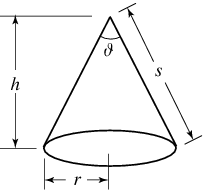I have always found the saxophone to be a beautiful physical object. I have often wondered as I work, what it is about the appearance of the saxophone that makes it so beautiful to me? Why, when its main purpose is to produce sound, does it look beautiful?
The sound of the saxophone is the sound of a cone of vibrating air. We change the length of the cone (by opening and closing pads) to change the fundamental frequency and sometimes also overblow the fundamental frequency of this cone of air to change the pitch. So each pitch we hear a saxophone play is a certain sized cone of air, resonating in one of its harmonic frequencies. This is simple physics, and all of the beauty and mystery of the sound we hear comes down to this:

It seems hard to believe, but it is truth. When you hear a saxophone, you are hearing a vibrating cone of air that gets longer and shorter. That’s really it. Simple, true, and based on fundamental physics and math. As clear and concise and universally true as anything gets.
(click photo for source, which is also a great acoustics primer)
So the saxophone is not the sound- the saxophone is the thing we wrap around the sound. It is the interface we need- with our two hands, ten fingers, mouth, lungs- to interact with this cone of air. Our abilities and limitations define it.
The saxophone starts with a mouthpiece, because we use the power of our lungs and the airtight aperture of our mouths to impart energy to the column of air through a reed valve. The cone then continues from there and follows our physiology: the neck curves because our hands are below and at a right angle to our mouths.
The bell curves back upwards because if it were straight it would get in the way of our legs, and be difficult to carry. The keys are laid out in a way that is defined by our finger spacing.
Even the materials that the saxophone is made of are also defined by our abilities and needs: the keys are most often given touchpieces of mother-of-pearl, because it resists our corrosive sweat and does not become slick when wet. The body is (usually) brass, because its ingredients are abundant on our planet, it is easy to create, and it is easy to work and bend into the complex shapes of a saxophone. The brass is often lacquered or plated to protect it from wear, but mostly from our own corrosive bodily fluids which we are constantly secreting.
It is the object we must make.
And some of the saxophone is pure art: unnecessary embellishments made purely for the joy of seeing it made real.
So what a saxophone is is the connection between us and a simple cone of air. It is the relationship between ourselves and the laws of nature, made visible. The saxophone is defined by what we are.
The saxophone is beautiful because we are beautiful.